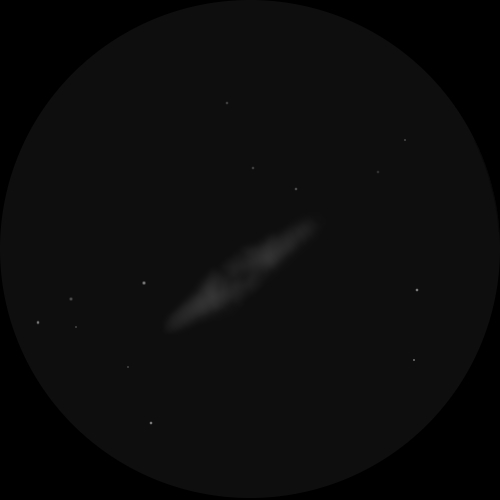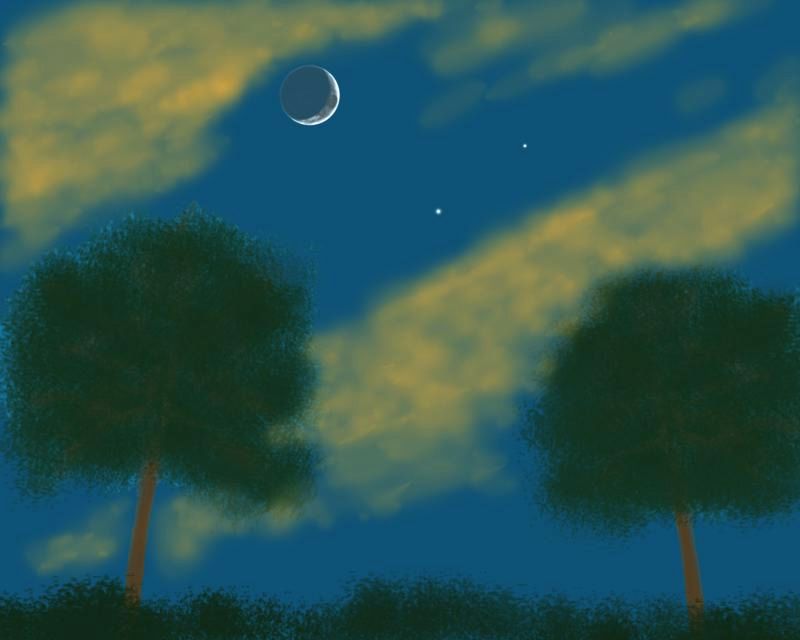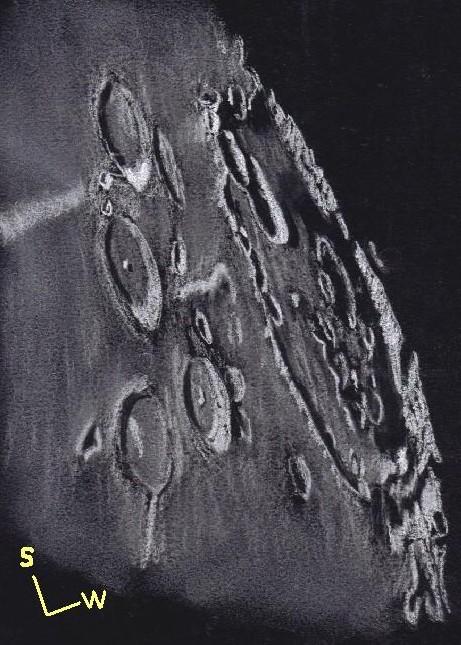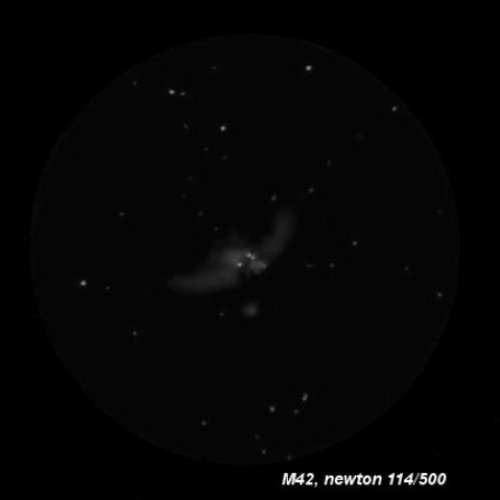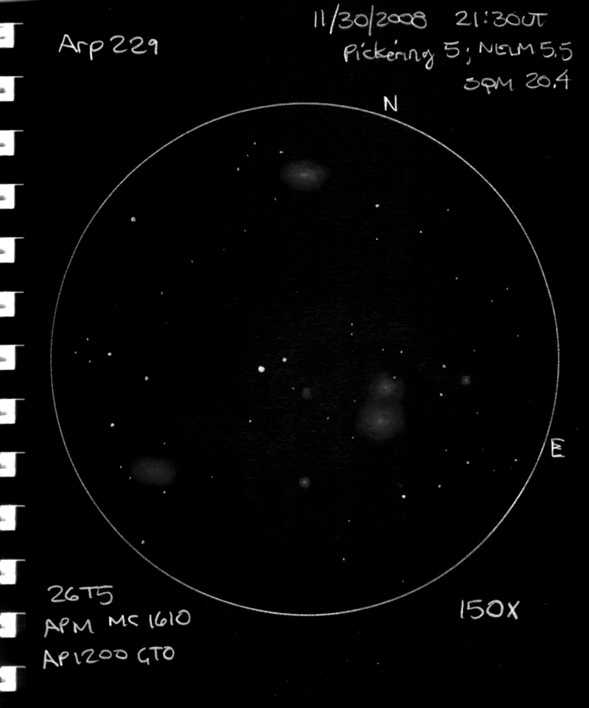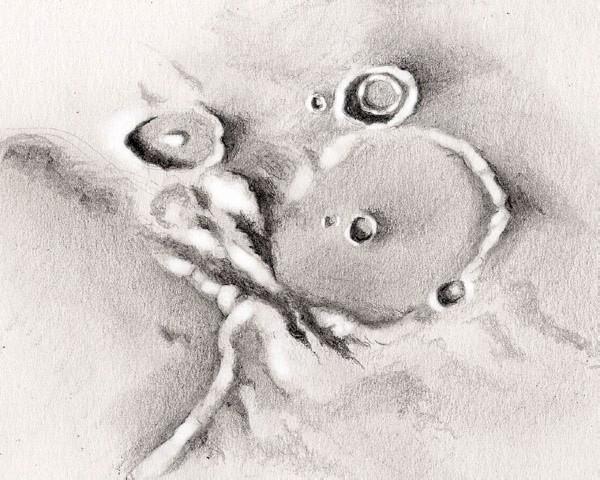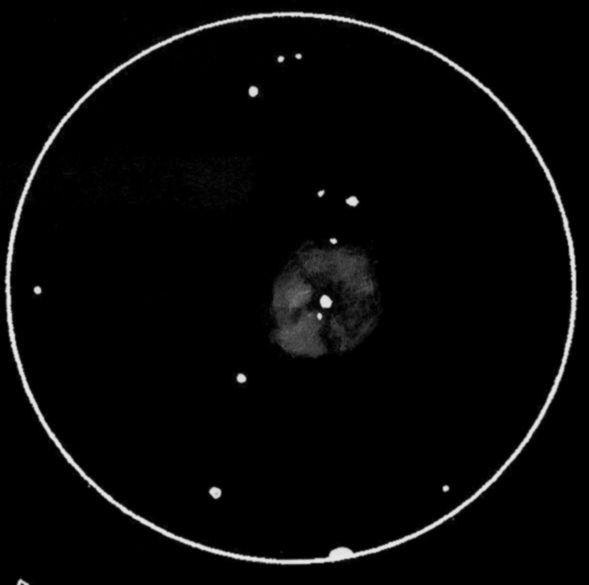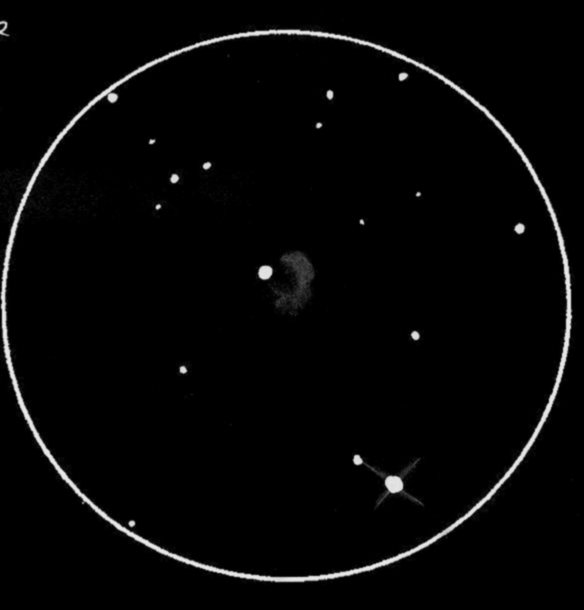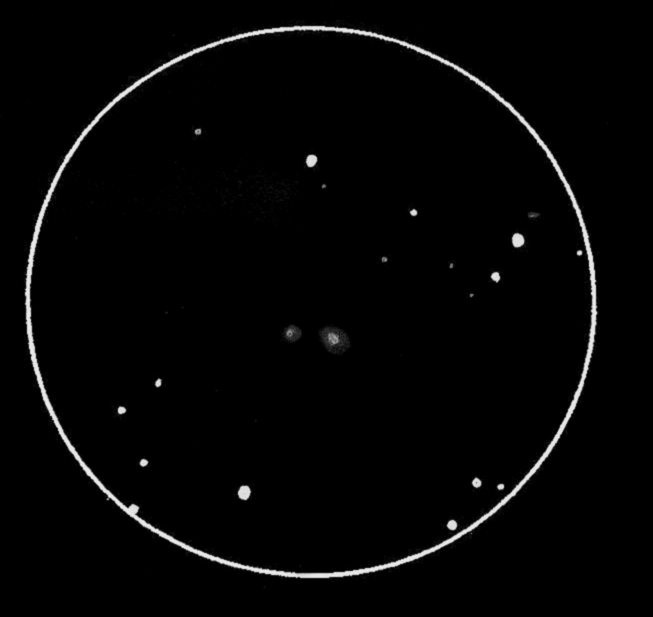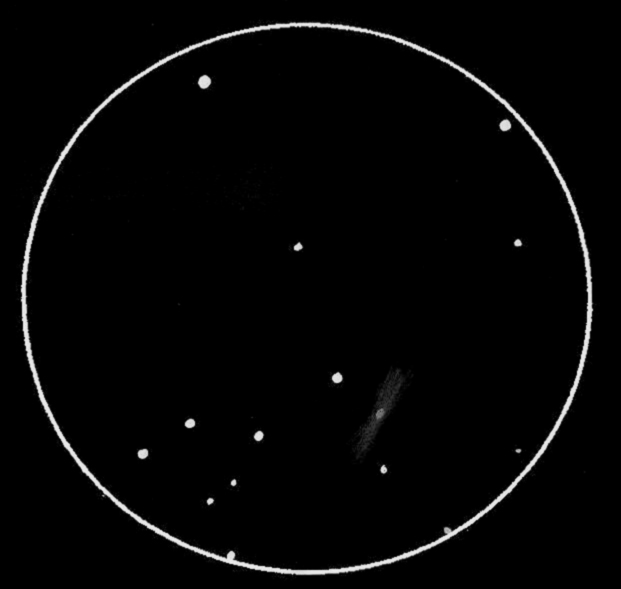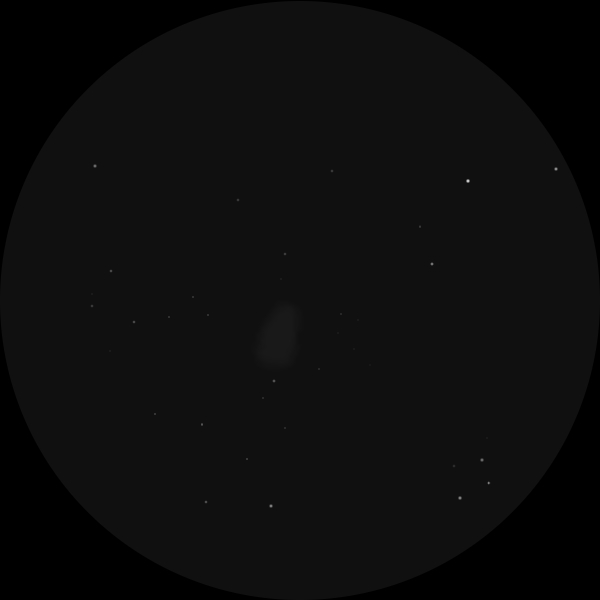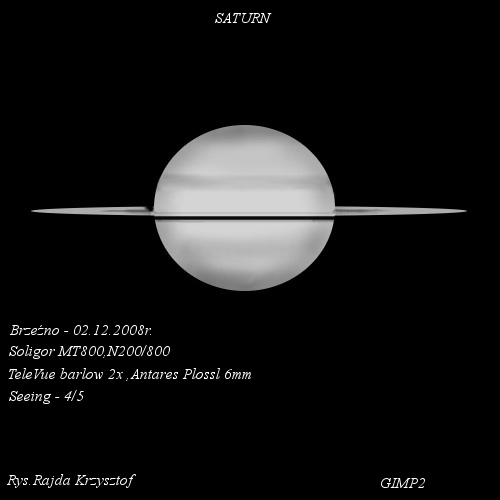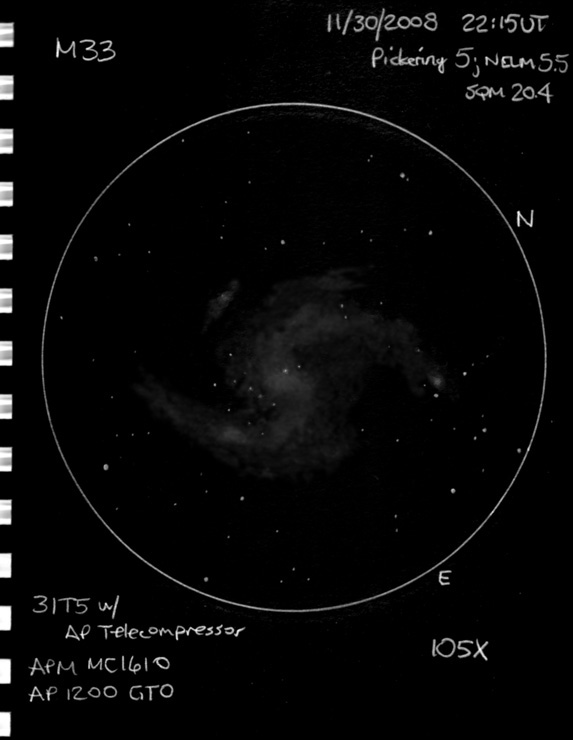
M33, the Pinwheel Galaxy
Sketch and Details by Jeff Young
William Parsons, the Third Earl of Rosse remarked that M33 was “full of knots. Spiral arrangement. Two similar curves like an “S” cross in the centre.” I seem to have captured many of his knots and the primary “S” shape, but was less successful with the secondary “S”.
M33 has the distinction of being one of the first galaxies identified as a “spiral nebulae” by Lord Rosse in the 19th C, as well as being one of the first “nebulae” identified as galaxies by Edwin Hubble in the early 20th C. Among visual amateurs its distinction is less complimentary: while bright enough to be visible naked-eye from pristine skies, its low surface brightness and large size make it notoriously difficult to discern much of the detail readily visible in photographs.
Sketched 11/30/2008 from County Louth, Ireland,
as viewed through 16” Mak-Cass @105X; Pickering 5, NELM 5.5, SQM 20.4
Daler-Rowney HB Graphic pencil on white cartridge paper. Scanned and inverted in Photoshop.
Cheers,
— Jeff.


